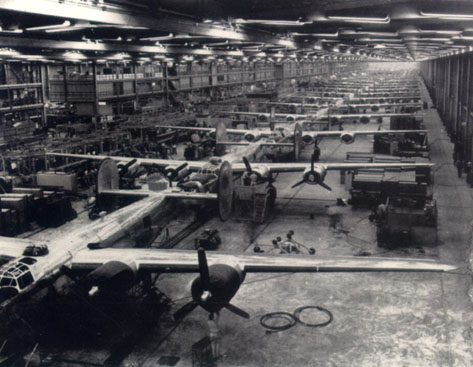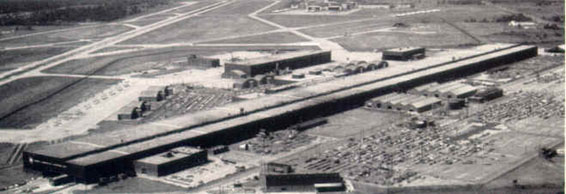In Response to World Events (1941-61), Tulsa District Exemplified Flexibility
The history of the Tulsa District from 1941 to 1961 highlights the flexibility of the district type of organization, which has often made possible a quick transfer from civil works activities to military construction, civil defense, and disaster relief.
In late 1940, the Tulsa District included some 500 officers and civilian employees. With the transfer of Army Air Corps construction from the Quartermaster Corps to the Engineers in December of that year, the District got its first military construction projects—the Tulsa Aircraft Assembly Plant, Tinker Airfield at Oklahoma City, and Enid Army Airbase. The transfer of all remaining Quartermaster construction to the engineers on 16 December 1941, nine days after the Pearl Harbor attacks, greatly increased the military construction load of an organization that only a year before had been concerned solely with civil works. The Tulsa District was now responsible for building cantonments, airbases, aircraft assembly plants, internment camps for prisoners of war and enemy aliens, ordnance plants, and military hospitals. During World War II the District supervised $800 million worth of military construction and procured equipment costing $100 million. The number of employees reached a peak of 3,250 in 1942.

The Denison and Tulsa Districts built facilities needed to mobilize a nation at war.
Aerial view of Tulsa's massive aircraft assembly plant (below).

In the years immediately after World War II, as military construction declined, the District again became almost wholly concerned with civil works. Just before the Korean War broke out in 1950, the District had a $17 million civil works program under way, with a military construction effort amounting to a mere $1 million. With the outbreak of war, the military construction effort again expanded, the District making the transition from civil to military construction rapidly and efficiently. From 1950 through 1953, the District supervised a military construction effort costing $150 million.
Military construction activities also were expanded occasionally in peacetime. In 1960, the District took on the crash program of building launching facilities for 12 Atlas ICBMs in the south-central United States. To provide protection against nuclear missile attack, the Tulsa District participated in the civil defense shelter survey program for the state of Oklahoma, entering into about 40 contracts with architect-engineer firms. About 4,500 buildings were surveyed.
The District on a number of occasions helped provide relief and assistance to areas stricken by natural disasters, easily taking in stride such added duties. In August 1947 the District was cited by the city of Tulsa for assistance rendered when the Arkansas River threatened to flood the Tulsa area. The District came to the aid of numerous communities when the Grand, Verdigris, and Red Rivers flooded in 1957 and 1959. It sent personnel to provide assistance to other districts during and after natural disasters, such as the California floods of 1955-56, the New England hurricane and floods of 1955, and Hurricane Carla in 1961. At home in Oklahoma, the scene of many tornadoes, District personnel provided crucial assistance to communities wrecked by the storms.
In the ensuing decades this pattern of flexible response proves to be one of the great strengths of the U.S. Army Corps of Engineers.
* * *
June 2003